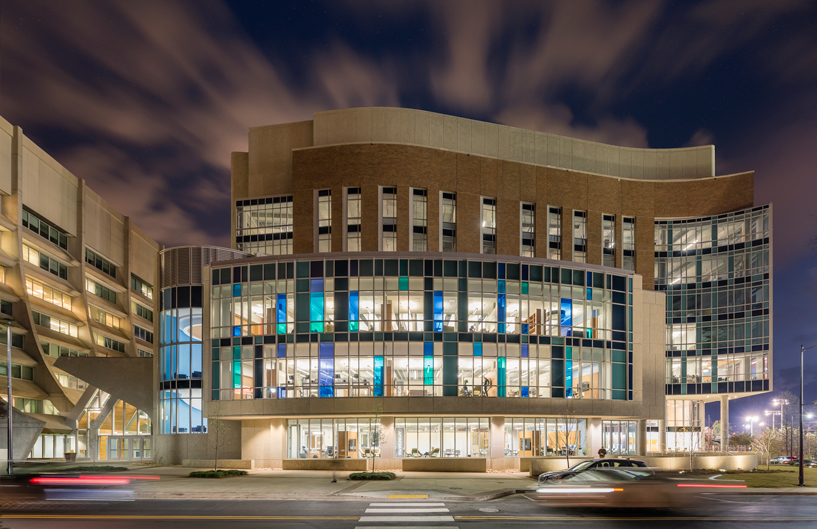Fostering Innovative Collaborations

Anton Grassl, Photographer
Vanderbilt University has a long-standing culture of creativity, collaboration, and civility that makes us unique among leading research universities. Fueled by an unusually compact campus, our synergistic environment promotes not only trans-institutional research of the highest caliber but also close interactions between students and faculty members.
The Engineering and Science Building is home for talented faculty members and students who are focused on trans-institutional teaching, research, and service. As one of the largest interdisciplinary buildings on campus, this space was programmatically designed to strengthen Vanderbilt's growing reputation as a major producer of intellectual leaders, entrepreneurs, and innovators. The facility continue to advance our position as one of the nation's prominent research institutions, bolstering our ability to address the most critical challenges our society faces.
While this building provides a transformational opportunity to strengthen the School of Engineering, it will also serve the entire university, responding to the four themes of Vanderbilt's strategic plan:
- Trans-institutional programs
- Healthcare solutions
- Education technologies
- Undergraduate residential experience
Significant consideration has been given to the design of this building, incorporating fundamental features reflecting the university's priorities:
- the Wond'ry (Innovation Center): Focuses on innovation, intellectual property creation, and entrepreneurship for the entire campus
- Atrium/Cafe/Social Space: Promotes interactions, building relationships across our dynamic campus and with our community, and allows opportunities to host events engaging students, faculty, alumni and others.
- Research Shared Resources: Includes a Clean Room (operated by VINSE) and a high precision instrumentation space to improve the competitiveness of researchers submitting grant proposals in engineering and related fields, such as the physical sciences and medicine.
- Instructional Space: Includes the latest in educational technologies to facilitate innovative intellectual engagement
- Research Laboratories: Includes two built-out floors accommodating a range of research modules (wet, damp, and dry), supporting faculty and graduate student growth plans for the School of Engineering. Three additional floors are shelled, providing flexibility to support new trans-institutional programs and opportunistic hires for academic leaders intersecting the School of Engineering, the College of Arts and Science, and the School of Medicine.
